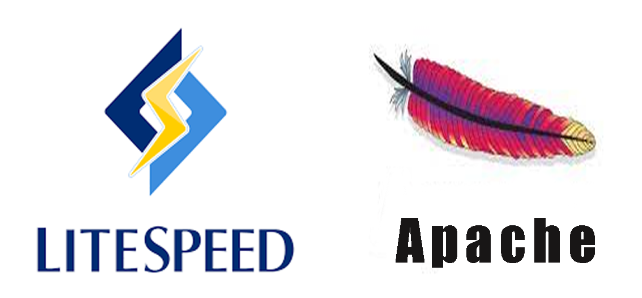18 Sep

|
Getting your Trinity Audio player ready...
|
Selecting the right web server is a critical decision when it comes to hosting your WordPress website. LiteSpeed and Apache are two of the most prominent choices in the world of web servers, each offering its own set of advantages and features.
In this comprehensive guide, we’ll take an in-depth look at LiteSpeed and Apache, comparing their performance, compatibility, ease of use, and other key factors that can impact your WordPress site. By the end of this article, you’ll be equipped with the knowledge you need to make an informed decision about which web server suits your WordPress project best.
Table of Contents
LiteSpeed vs Apache:
Before we dive into the details, let’s provide a brief overview of LiteSpeed and Apache.
LiteSpeed:
LiteSpeed Web Server is a high-performance, commercial web server known for its speed and efficiency. It’s designed to handle a large number of concurrent connections while utilizing minimal server resources. One of its standout features for WordPress users is LiteSpeed Cache, a powerful tool that can significantly enhance your site’s loading times.
Apache:
Apache HTTP Server, commonly referred to as Apache, is an open-source web server that has been a cornerstone of the internet for decades. It’s highly customizable and supports various modules and configurations. Apache is widely used for hosting WordPress sites and boasts a vast community of users and developers.
You can more read about Apache vs. Nginx
Performance Comparison
Performance is a pivotal factor when choosing a web server for your WordPress site. Here’s a detailed comparison of LiteSpeed and Apache in terms of performance:
LiteSpeed:
- LiteSpeed is renowned for its exceptional speed and efficiency. It utilizes event-driven architecture and asynchronous I/O, making it blazingly fast.
- The LiteSpeed Cache, an integral feature, can significantly improve WordPress site loading times by caching dynamic content and serving it quickly to visitors.
- LiteSpeed’s ability to handle a high number of concurrent connections ensures your site remains responsive, even during traffic spikes.
Apache:
- Apache is celebrated for its stability and versatility, but it may be less performant out of the box compared to LiteSpeed.
- While Apache can be optimized for speed through various configurations and modules like mod_php and mod_cache, achieving similar performance levels as LiteSpeed may require more server resources.
- Apache’s .htaccess file can be both a blessing and a curse. While it allows for extensive configuration, improper use can lead to performance bottlenecks.
Compatibility and Ease of Use
Both LiteSpeed and Apache are compatible with WordPress, but they differ in terms of ease of use:
LiteSpeed:
- LiteSpeed offers a dedicated WordPress plugin, LiteSpeed Cache, which simplifies caching and optimization tasks, even for non-technical users.
- Its user-friendly control panel makes it straightforward to configure server settings, ensuring that even beginners can navigate it with ease.
- LiteSpeed’s documentation and support are excellent, providing users with the resources they need to troubleshoot issues efficiently.
Apache:
- Apache has a steeper learning curve, particularly for beginners.
- While Apache’s extensive documentation and a large community can be helpful, troubleshooting can be more challenging for less experienced users.
What’s the Difference Between LiteSpeed and Apache Web Servers?
LiteSpeed and Apache are both web server software used to serve websites and web applications. While they share some similarities, they also have several key differences in terms of performance, architecture, licensing, and features. Here’s a detailed comparison of the two:
1 – Architecture:
LiteSpeed:
LiteSpeed is known for its high-performance, event-driven architecture. It uses asynchronous I/O, which allows it to handle a large number of concurrent connections efficiently.
This architecture minimizes server resource usage and improves response times, making it an excellent choice for websites with high traffic loads.
Apache:
Apache, on the other hand, primarily uses a process-based or thread-based architecture, depending on the configuration.
This architecture can be less efficient when handling a large number of concurrent connections, especially under heavy traffic loads.
2 – Performance:
LiteSpeed:
LiteSpeed is widely recognized for its superior performance and speed. It can significantly reduce page load times, contributing to a better user experience.
The LiteSpeed Cache plugin is available for platforms like WordPress and can further boost performance by caching dynamic content.
Apache:
Apache is known for its stability and versatility, but it may require more optimization efforts to achieve similar levels of performance as LiteSpeed.
Performance improvements in Apache often involve configuration changes, such as optimizing modules and enabling caching mechanisms.
3 – Licensing:
LiteSpeed:
LiteSpeed has both open-source and commercial versions. The open-source version, OpenLiteSpeed, is free to use and comes with many features. However, the commercial versions offer advanced features and official support, usually requiring a license fee.
Apache:
Apache is open-source and free to use under the Apache License 2.0. It has a large community of developers and users, contributing to its extensive ecosystem of modules and extensions.
4 – Ease of Use:
LiteSpeed:
LiteSpeed is often considered more user-friendly, especially for those with limited technical expertise. It provides a user-friendly web-based control panel for configuration.
The LiteSpeed Cache plugin simplifies caching and optimization tasks for popular platforms like WordPress.
Apache:
Apache has a steeper learning curve, particularly for beginners. Configuration files like httpd.conf and .htaccess require a good understanding of the server.
While Apache’s extensive documentation and large community can be helpful, troubleshooting can be more challenging for less experienced users.
5 – Community and Support:
LiteSpeed:
LiteSpeed has a growing community, but it is smaller compared to Apache’s. However, it offers official support for its commercial versions, which can be beneficial for enterprises and mission-critical websites.
Apache:
Apache boasts a vast and well-established community. This large user base means that finding solutions to common issues and accessing resources is relatively easy.
Conclusion
Selecting between LiteSpeed and Apache for hosting your WordPress site depends on your specific needs, technical expertise, and SEO goals. LiteSpeed stands out for its exceptional performance and user-friendly features, making it an excellent choice for those seeking a fast and efficient solution with minimal configuration.
On the other hand, Apache remains a solid option for experienced users who require extensive customization and are willing to invest time in optimization. Regardless of your choice, both web servers are capable of hosting WordPress effectively, and with proper setup and maintenance, you can achieve excellent SEO results with either one. Ultimately, the best web server for your WordPress site will align with your site’s objectives, your technical skills, and your long-term SEO strategy.


